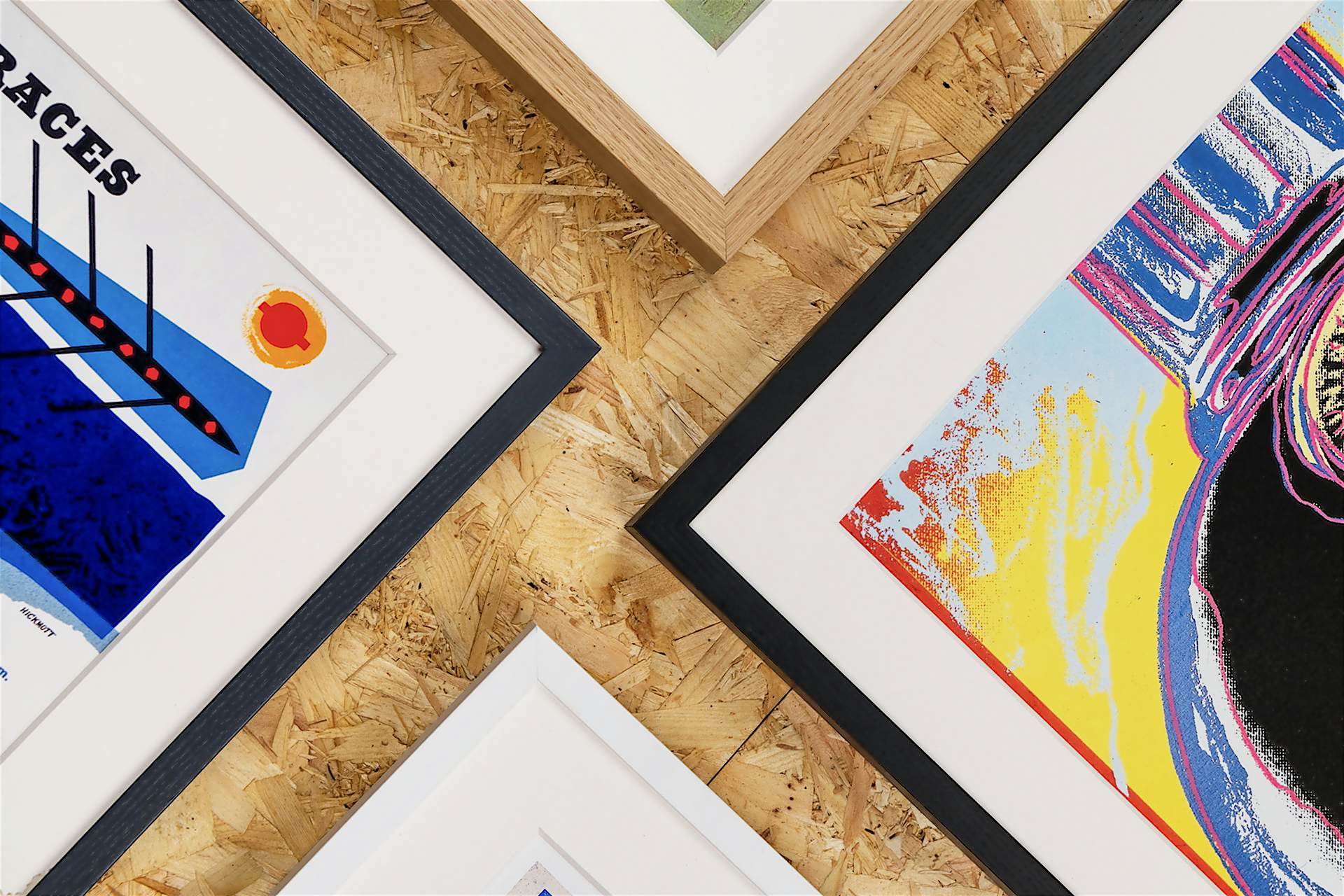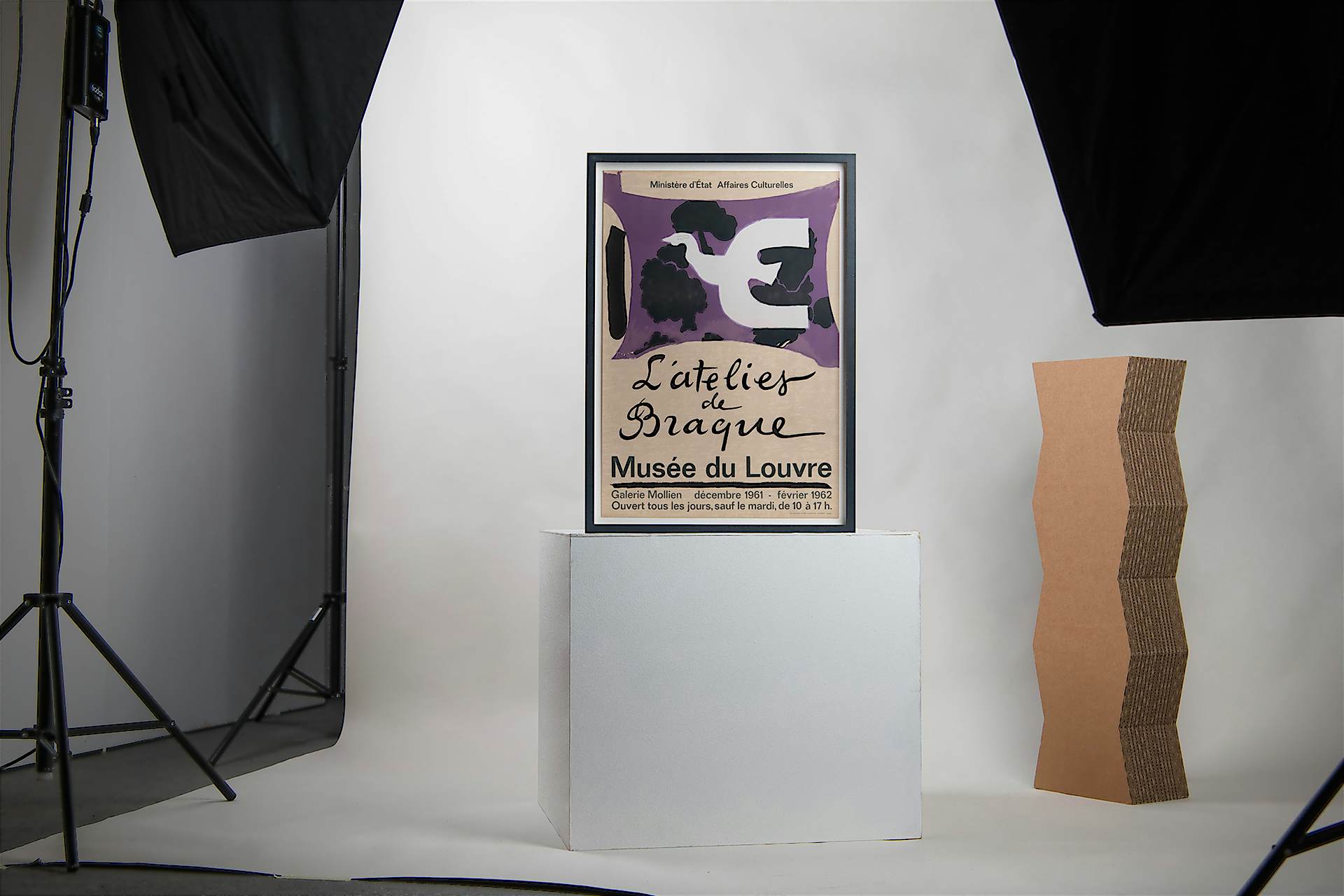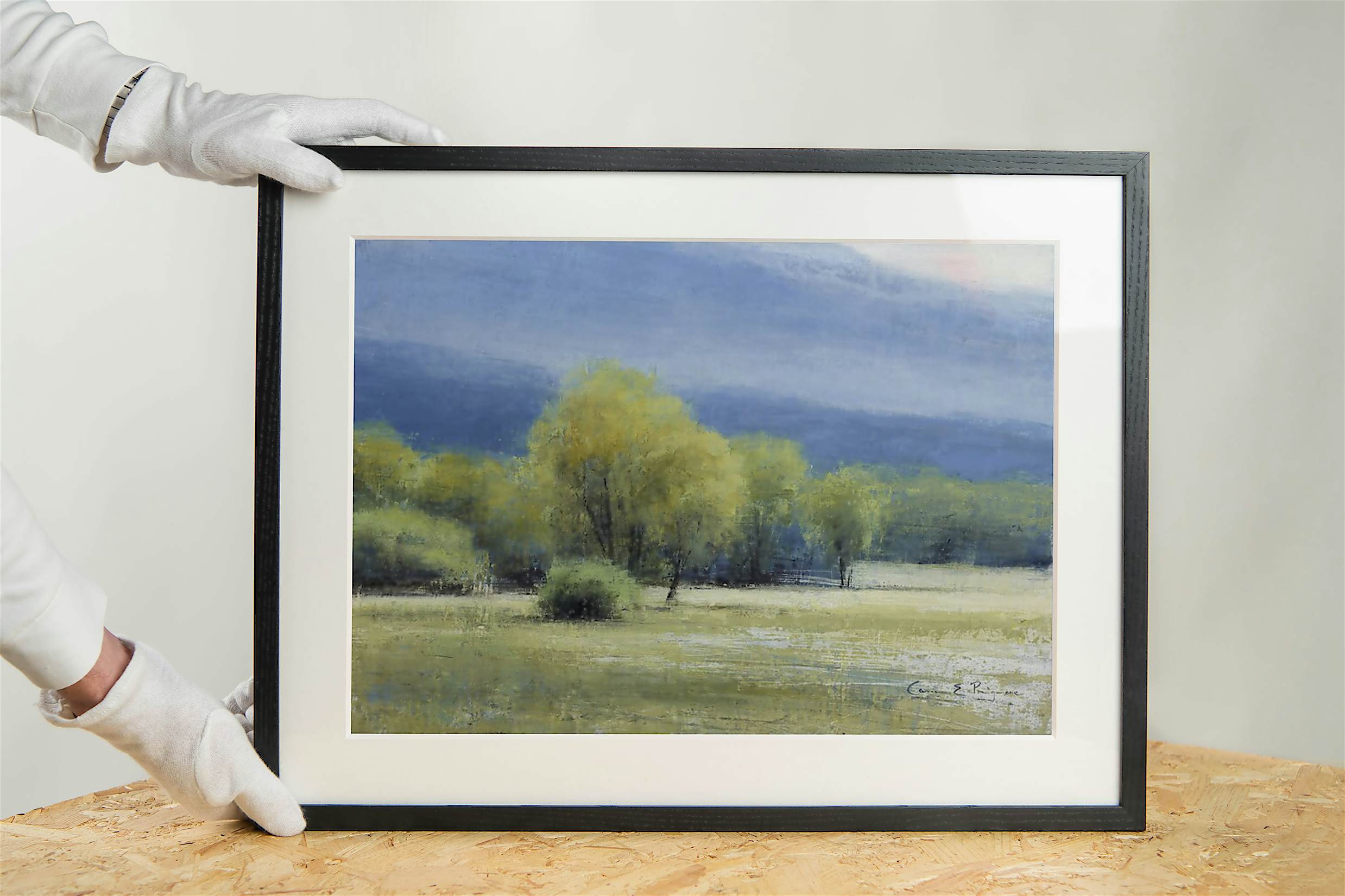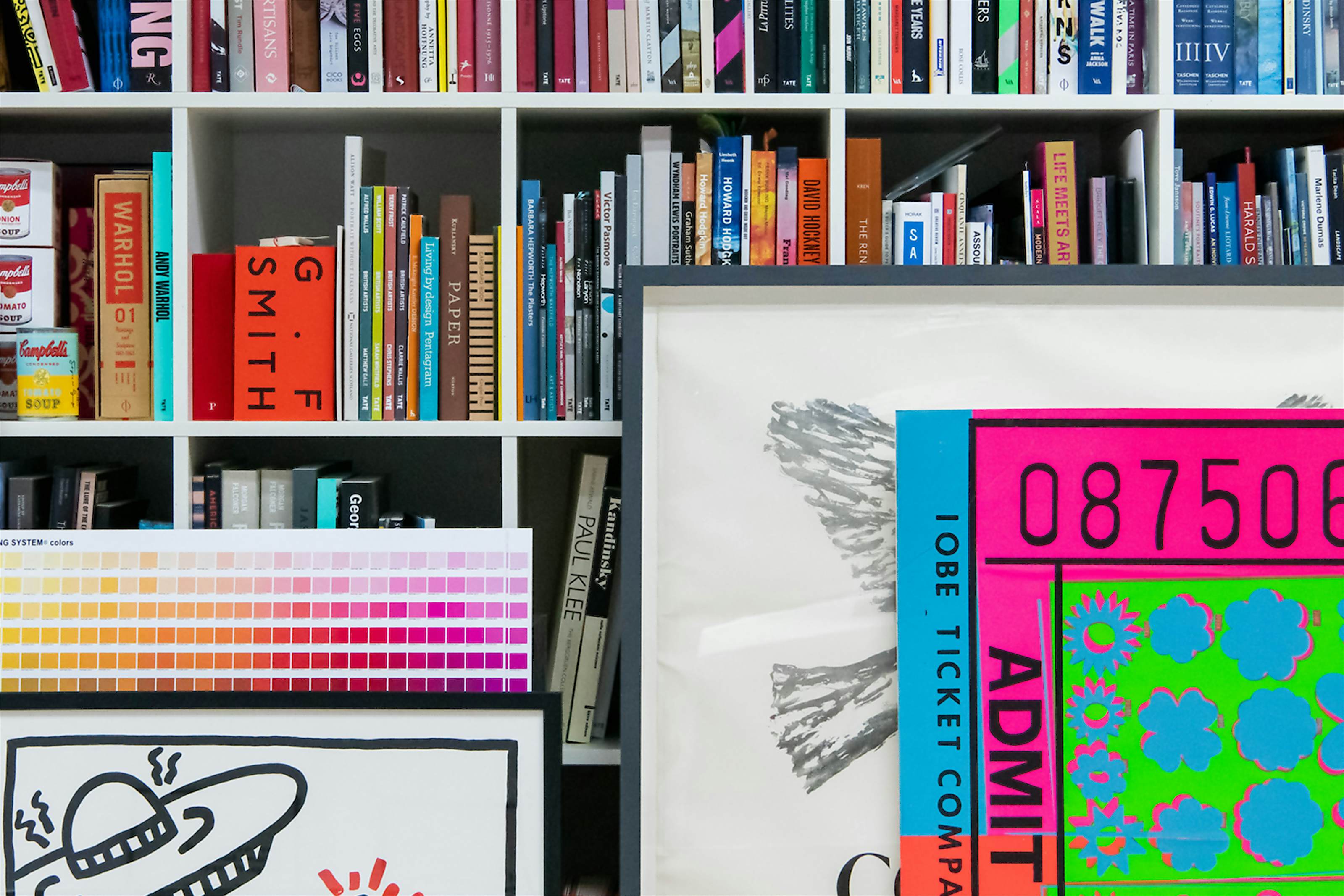Glossary of art terms
Reading time: 2 mins
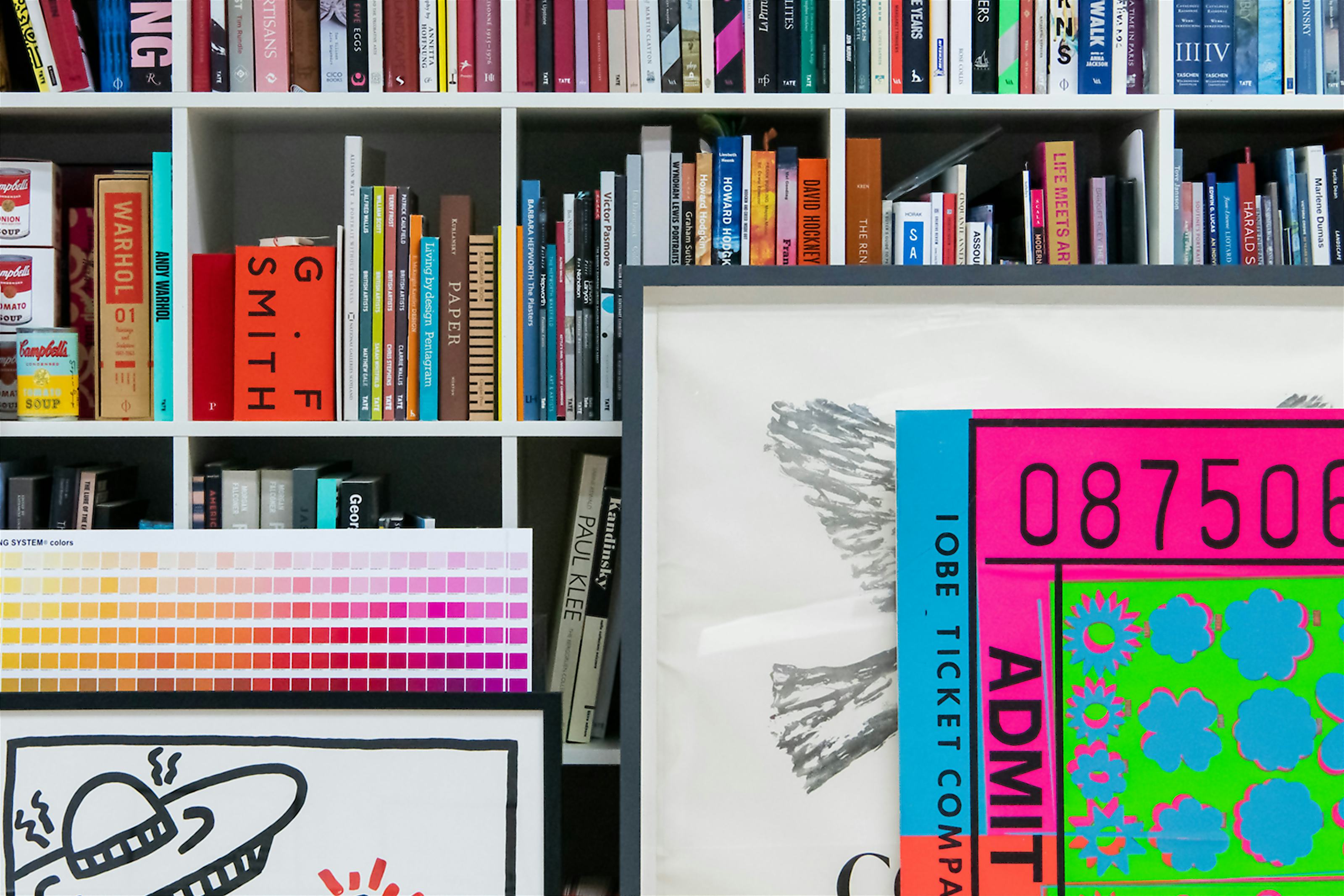
Art print
An art print is a reproduction of an original artwork, printed onto acid-free fine art paper using archival inks so the print does not fade and discolour with age. Art prints can be produced using a number of different methods, from hand printing to digital processes. Our print team carefully select the best possible methods to do justice to every artwork.
Cast acrylic
All of our prints are framed using acrylic glazing instead of glass. Cast acrylic is a high-quality material, offering many benefits including 92% optical clarity and 90% UV protection. As it is shatter-resistant, it’s a much safer material to have in your home or workplace.
Conservation framing
We adopt a conservation framing method for our special Rare & Limited prints which simply means archival methods are used to preserve and present the print. The artwork is ‘floated’ (slightly risen) on conservation grade mount- board using archival tape (as used by the majority of galleries across the world) to protect the back of the print from damage over time.
Using this tape means the print can easily be reframed in the future, should your tastes change. The print is placed in a recessed box for the best presentation.
Giclée
Pronounced ‘jee-clay’, giclée printing is a fine art, digital print process. We use this method of printing because it allows us to print single art prints one at a time to museum quality standards.
Giclée printing methods also allow us to print on a variety of different print materials, including matte, gloss and watercolour paper. The high quality inks and our top-of-the-range precision digital printers ensure that your favourite artwork is faithfully reproduced every time.
GSM
‘Grams per square metre’ is the unit of measurement for paper weight. The weightage does not directly affect the thickness of the paper. We generally use a minimum of 250 gsm high quality fine art paper but this differs between the prints due to size and value.
Mount
A mount-board creates a window around the print, showing a gap between the artwork and the glazing which helps prevent damage from condensation. Also, our acid free, white-core mount board means the cut bevel-edge nearest the print remains crisp and white; lesser quality boards quickly discolour resulting in an unattractive yellowed edge.
Recessed box frame
Recessed box framing sets the print back from the glazing and is complemented by a paper border around the image instead of mount board. This style of framing works particularly well for Vintage Film and Travel Posters as well as Graphic and Typography prints.
Screen Printing
Screen Printing is a highly skilled method of reproducing artwork. Firstly, the printer creates an image on a fine mesh screen using a thin coat of wax. A different screen is created for each colour that is needed for the print, making this printing method more suitable for artworks with just a few colours and low volume.
The screen is laid down onto the paper and ink is hand-pulled across it using a sponge like device. The ink seeps through the mesh onto the paper leaving a print of the image. This is done one colour at a time, with the print being set aside to dry after each impression.
Traditional stone lithograph
Initially invented by German playwright Alois Senefelder in 1796, lithography was intended as a cheap method of publishing theatrical works. Lithography relies on the repellent relationship between grease and water. An artist marks a piece of stone with oil, fat, or a greasy wax crayon and covers it with a thin film of water.
When ink is applied, it is attracted to the greasy image and repelled by the water. After creating this hydrophobic image on a stone surface and loading it with ink, it runs through a press that applies even pressure over the surface. The ink is transferred from the stone to the paper and can be reproduced with precision time and time again. We offer a range of collectable stone lithographs by celebrated artists, in partnership with Galerie Mourlot.
